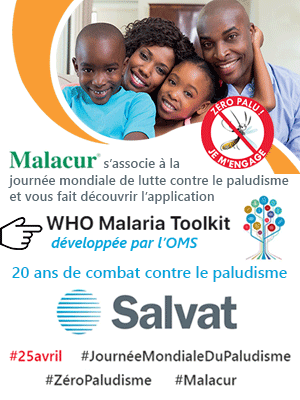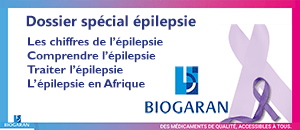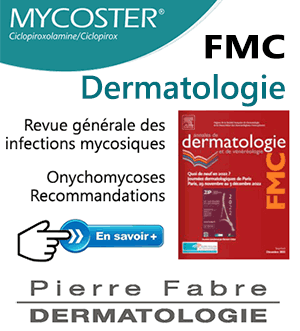Accès aux sites pays ![]()
![]() BENIN
BENIN![]() BURKINA FASO
BURKINA FASO![]() CAMEROUN
CAMEROUN![]() CENTRAFRIQUE
CENTRAFRIQUE![]() CONGO
CONGO![]() COTE D'IVOIRE
COTE D'IVOIRE![]() GABON
GABON
![]() GUINEE
GUINEE![]() MADAGASCAR
MADAGASCAR![]() MALI
MALI![]() R.D. CONGO
R.D. CONGO![]() SENEGAL
SENEGAL![]() TOGO
TOGO
Accès aux sites pays ![]()
![]() BENIN
BENIN![]() BURKINA FASO
BURKINA FASO![]() CAMEROUN
CAMEROUN![]() CENTRAFRIQUE
CENTRAFRIQUE![]() CONGO
CONGO![]() COTE D'IVOIRE
COTE D'IVOIRE![]() GABON
GABON
![]() GUINEE
GUINEE![]() MADAGASCAR
MADAGASCAR![]() MALI
MALI![]() R.D. CONGO
R.D. CONGO![]() SENEGAL
SENEGAL![]() TOGO
TOGO

Publié dans Médecine d'Afrique Noire 6906 - Juin 2022 - pages 381-386
 Pancardite et sa difficulté de prise en charge. A propos d’un cas pédiatrique à Madagascar
Pancardite et sa difficulté de prise en charge. A propos d’un cas pédiatrique à MadagascarAuteurs : R.R. Rakotonoel, R.M. Miandrisoa, R.L. Tsifiregna, H. Ravaoavy, S.A Ralamboson, S. Rakotoarimanana, N. Rabearivony - Madagascar
Introduction : L’endocardite bactérienne est rare et grave chez l’enfant. Nous rapportons, un cas difficile de prise en charge d’une pancardite bactérienne à grosse végétation mitrale d’origine tuberculeuse probable.
Observation : Il s’agissait d’un garçon de 3 ans sans antécédents particulier. Sa maladie aurait évolué deux mois avant son admission par une fièvre persistante non-chiffrée sans cause apparente, associée à une douleur thoracique mal caractérisée et à une dyspnée d’aggravation progressive. L’examen physique était sans particularité. L’exploration biologique objectivait un syndrome inflammatoire biologique, avec la mise en évidence des Staphylococcus aureus méti-S à l’hémoculture. La radiographie thoracique montrait une cardiomégalie. L’écho-doppler cardiaque transthoracique objectivait une volumineuse masse appendue à la grande valve mitrale, associée à un épanchement péricardique cloisonné de grande abondance sans signe de tamponnade. Le diagnostic d’endocardite bactérienne mitrale à Staphylococcus aureus méti-S associée à un épanchement péricardique abondant a été posé. L’enfant avait bénéficié d’une triple antibiothérapie parentérale et d’un drainage péricardique. Mais l’évolution, au 6ème jour d’un traitement bien conduit, était stationnaire avec la persistance des signes cliniques et de l’épanchement péricardique. De ce fait, un traitement d’épreuve antituberculeux associé à une corticothérapie orale était instauré. Au bout de 4 jours de traitement, l’évolution était favorable avec la disparition de la fièvre et de la dyspnée. L’épanchement péricardique s’était asséché en une semaine. Le bilan inflammatoire biologique s’était normalisé au 16ème jour et la disparition de la végétation mitrale au 20ème jour de traitement.
Conclusion : Des faisceaux d’arguments cliniques, biologiques, morphologiques, thérapeutiques et évolutifs ont permis à poser le diagnostic d’une pancardite tuberculeuse.
Introduction: Bacterial endocarditis is rare and serious in children. We report a difficult case of bacterial pancarditis with large mitral vegetation of probable tuberculous origin.
Observation: It was a 3-year-old boy with no particular history. His disease would have evolved two months before his admission by an unquantified persistent fever without apparent cause, associated with poorly characterized chest pain and progressively worsening dyspnoea. The physical examination was unremarkable. The biological exploration objectified a biological inflammatory syndrome, with the demonstration of Staphylococcus aureus méti-S in the blood culture. The chest X-ray showed cardiomegaly. The transthoracic cardiac echo-Doppler objectified a voluminous mass hanging from the large mitral valve, associated with a very abundant septate pericardial effusion without signs of tamponade. The diagnosis of mitral bacterial endocarditis due to Staphylococcus aureus meti-S associated with abundant pericardial effusion was made. The child had received triple parenteral antibiotic therapy and pericardial drainage. But the evolution, on the 6th day of a well conducted treatment, was stationary with the persistence of clinical signs and pericardial effusion. As a result, an antituberculosis test treatment associated with oral corticosteroid therapy was instituted. After 4 days of treatment, the evolution was favorable with the disappearance of fever and dyspnea. The pericardial effusion had dried up within a week. The biological inflammatory assessment was normalized on the 16th day and the disappearance of the mitral vegetation on the 20th day of treatment.
Conclusion: Bundles of clinical, biological, morphological, therapeutic, and evolutionary arguments made it possible to make the diagnosis of tuberculous pancarditis.
Cet article est actuellement coté ![]() (1,0 étoiles) par les abonnés de Médecine d'Afrique Noire.
(1,0 étoiles) par les abonnés de Médecine d'Afrique Noire.
Il a été consulté 3467 fois, téléchargé 3 fois et évalué 1 fois.
Aucun commentaire n'a encore été ajouté à propos de cet article
 Obtenir l'article intégral en PDF
Obtenir l'article intégral en PDF
Plus de résumés d'articles - Plus d'articles en texte intégral
Restez informés : recevez, chaque mercredi, la lettre d'informations de Santé tropicale. Inscriptions
Ce contenu gratuit vous est destiné :








![]() Adresse
Adresse
![]() Téléphone
Téléphone
![]() Contactez-nous
Contactez-nous
Actualités
Articles médicaux